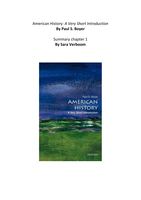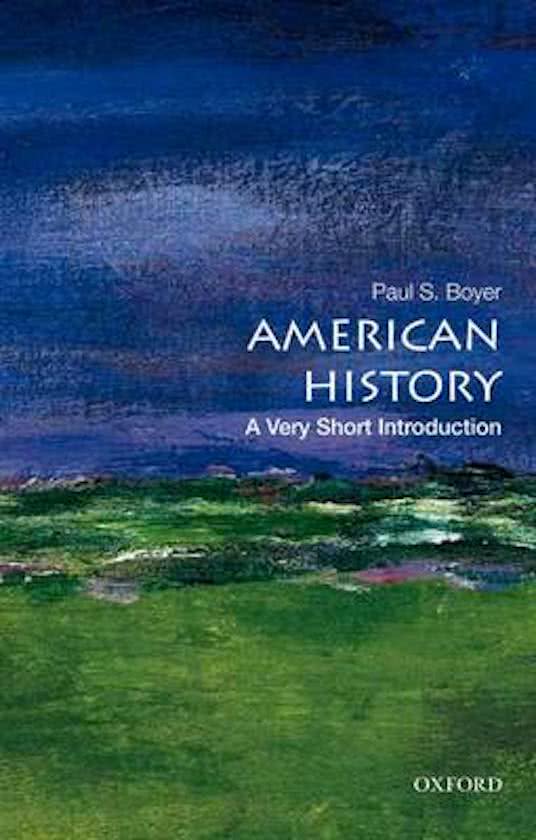American History: A Very Short Introduction
By Paul S. Boyer
Summary chapter 1
By Sara Verboom
, American History: A Very Short Introduction by Paul S. Boyer Chapter 1
Summarised by Sara Verboom
Chapter 1
Beginnings: Pre-history to 1763
America is believed to be discovered by Christopher Columbus, but he wasn’t
the first to set foot in the New World. In fact, historians say that the first
people who came to America were Siberians who crossed the water or a now
vanished land route to Alaska. This happened over 15.000 years ago.
Leif Erikson, an Icelandic voyager, was the first European to reach North
America/Canada in the 11th century. He named the land “Newfoundland”.
Centuries later, in 1492, Christopher Columbus set sail to find a new route to
the Indies, but instead found America. As he didn’t know that he had landed on
a new continent, he called the natives he encountered Indians. Columbus
reached shore on an island he called San Salvador (in the Caribbean).
After Columbus’ return to Spain, other European explorers followed. Among
them, the Italian cartographer Amerigo Vespucci (who America was later
named after). Soon, the American shores were full of settlements from the
Spanish, the French, the Dutch, and later the English.
The Spanish settlements were to be found in the south (Florida, New Mexico,
Mexico) whereas the Dutch claimed a more northern part: Manhattan Island,
where they established New Amsterdam (nowadays known as New York). The
French settled in Canada and Louisiana (which covered about half of North
America back then). These settlements were all established in the 1500s and
were merely to expand kingdoms and gain riches, rather than to actually settle.
The first permanent English settlement was built in 1607 in Virginia, and was
called Jamestown, after King James I. John Smith was one of these settlers and
is known for his encounter with Pocahontas, a princess of a tribe native to
Virginia. Romantic as their story may have been, the lives of these settlers were
anything but. They had come to America to find silver and gold, but soon most
of them died of diseases, hunger, and attacks from the Natives. In 1619 the
first slave ship arrived in Jamestown.
The English soon expanded their territory to the South (North and South
Carolina to Georgia) where they eventually encountered the Spanish outposts
in Florida.






